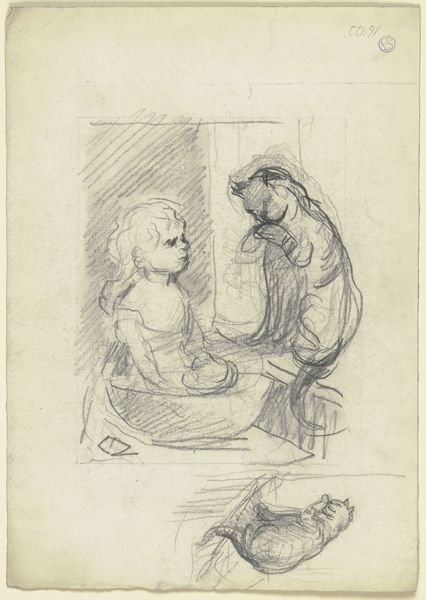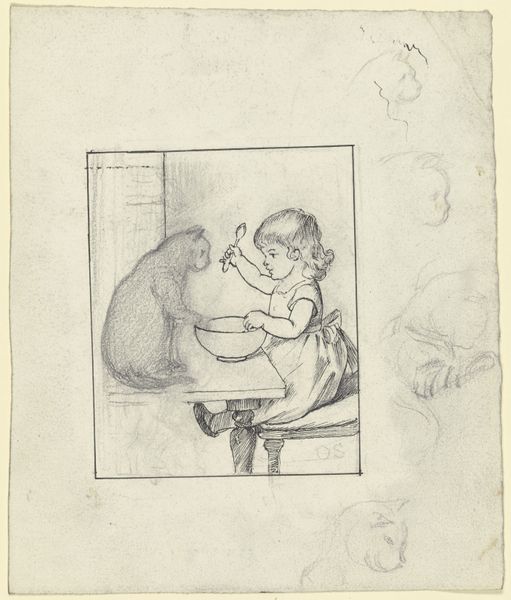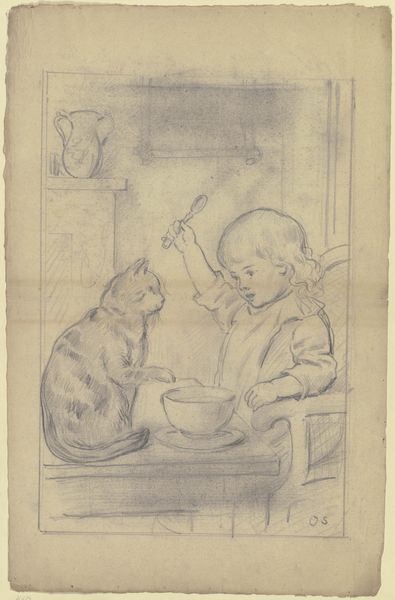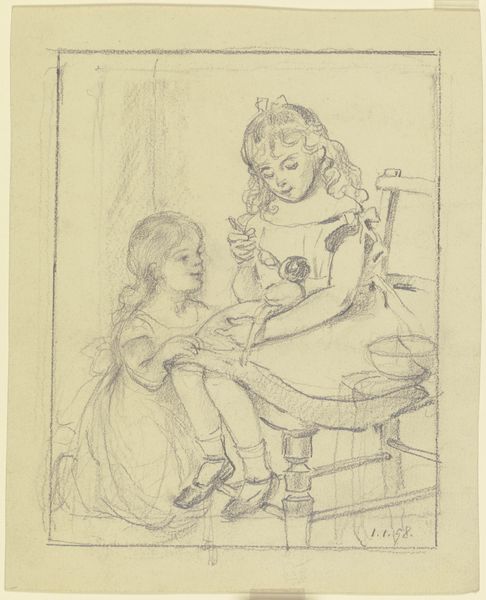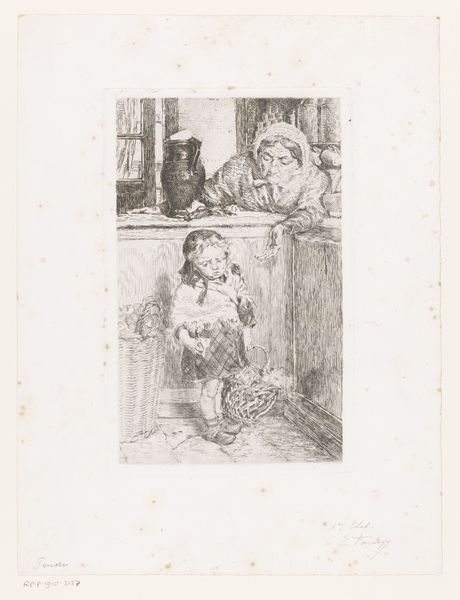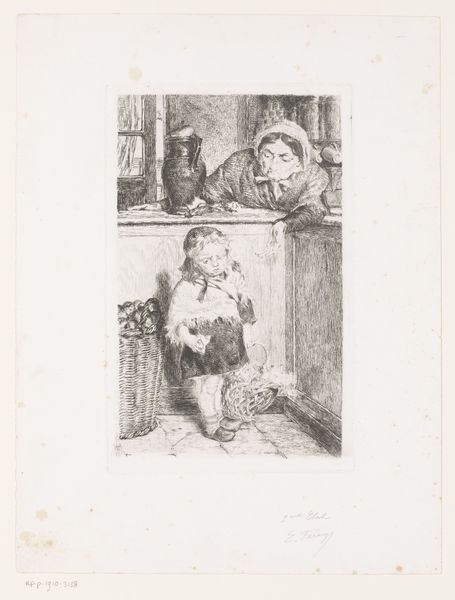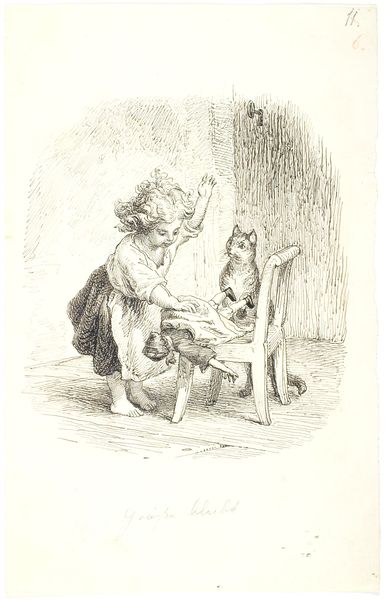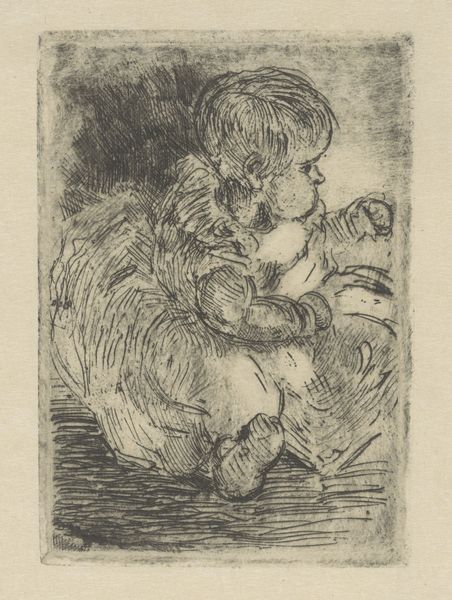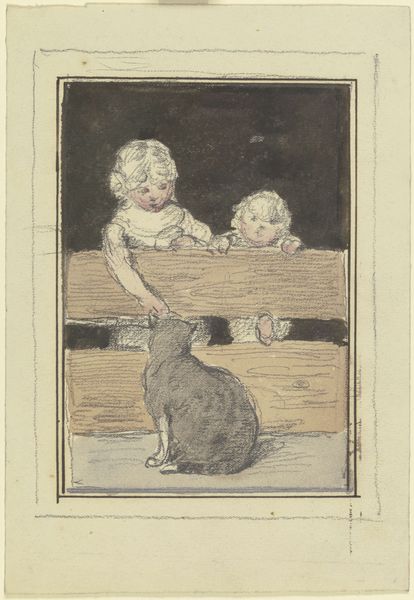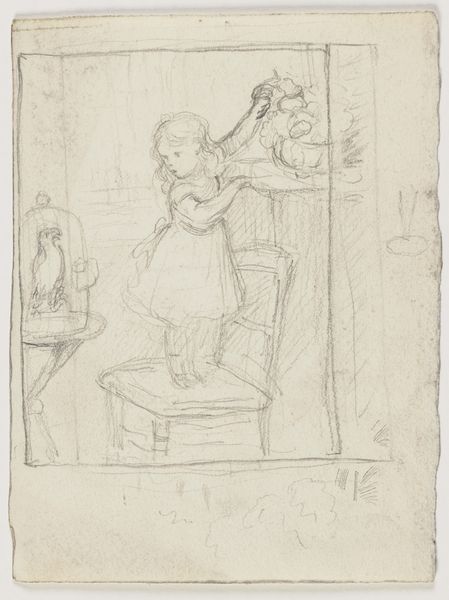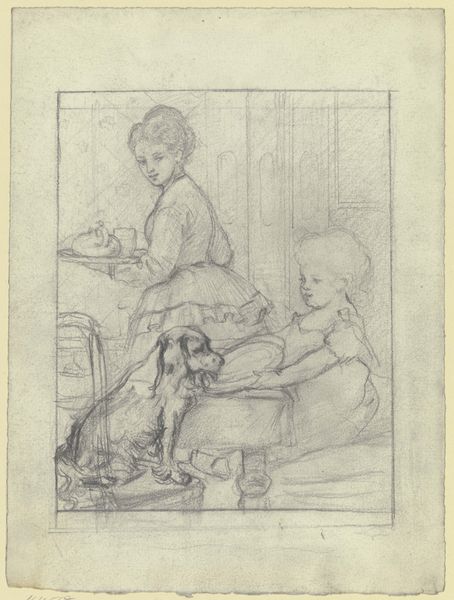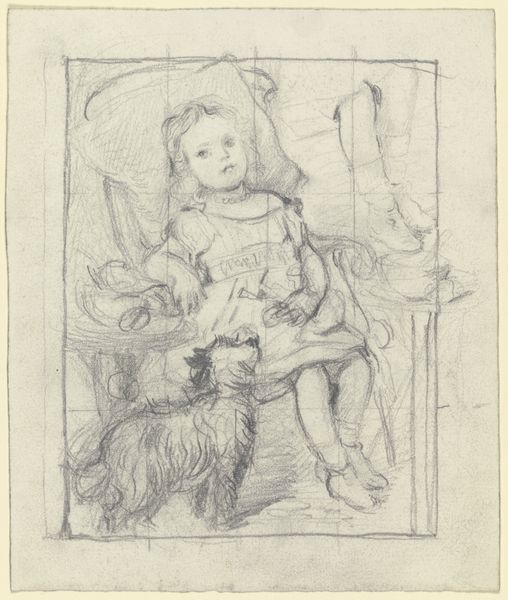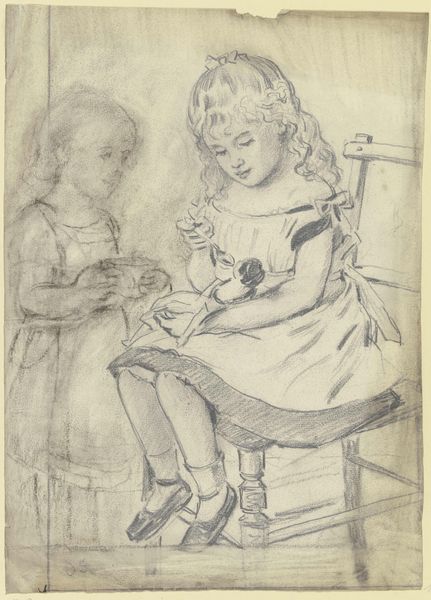
_Katzenwäsche_, dabei Studien eines Kinderkopfes im Profil nach links c. 1872 - 1874
0:00
0:00
drawing, ink, pencil, chalk, charcoal
#
portrait
#
drawing
#
16_19th-century
#
ink
#
pencil
#
chalk
#
genre-painting
#
charcoal
#
realism
Copyright: Public Domain
Editor: So, this is "Katzenwäsche, dabei Studien eines Kinderkopfes im Profil nach links," or "Cat Wash, with Studies of a Child's Head in Profile to the Left," by Otto Scholderer, created around 1872-1874. It's a drawing using ink, pencil, chalk, and charcoal. I'm really struck by how informal and intimate it feels, like a glimpse into a private moment. What stands out to you? Curator: The compositional arrangement immediately grabs my attention. Observe the strategic placement of the child and cat, framed within what appears to be a window or an enclosed space, set apart in the upper portion of the image, separate from the profile studies of the child's head below. How do you interpret this structured duality within the image? Editor: Well, it feels like a juxtaposition. The main scene is active, with the child and cat seemingly engaged in a daily routine, while the profile studies below are more static and contemplative. Almost like different stages of observation. Curator: Precisely. Note the contrasting line qualities as well. The primary scene employs heavier, more defined strokes, especially noticeable in the delineation of the cat's form, while the child's head studies appear fainter, almost ephemeral. This interplay of weight and form contributes significantly to the artwork's overall visual dynamic. How does this affect your perception of depth within the piece? Editor: I see what you mean. The darker lines make the main scene pop forward, while the lighter sketches recede, creating a sense of layered space on the page. The textural variation provided by the combination of drawing materials—ink, pencil, chalk, and charcoal—also gives this piece a more lifelike aesthetic. Curator: Indeed. Scholderer’s mastery in utilizing these media allows for subtle tonal gradations, giving depth and form to otherwise simple sketches, enriching the image's aesthetic appeal. The choice to render this scene in monochrome also compels us to focus on form and light. This encourages, don’t you think, closer inspection of the details, rather than immediate emotional engagement? Editor: I think I agree! Analyzing this piece formally really sheds light on how much detail and consideration went into its construction, influencing its impact on the viewer. Thanks! Curator: My pleasure. These artworks offer endless possibility for close viewing.
Comments
No comments
Be the first to comment and join the conversation on the ultimate creative platform.
